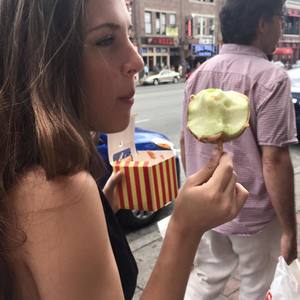There’s something ultra-comforting about consuming food you made with your own two hands. Knowing exactly what goes into your body and treating yourself to something special show great self-care. Plus, the money saved buying fresh groceries in lieu of pre-made products is also healthy for the ol’ college budget. For all of these exact reasons, I began brewing my own kombucha.
Kombucha is a bubbly, fermented tea drink with a light, sweet, and sour taste that makes consuming its immune-boosting probiotics that much easier. Probiotics are the “good for you” bacteria and yeast found in yogurt, sauerkraut, and kimchi that make your digestive system go ’round. This bubbly drink has been used for centuries, likely originating in China where it was known as “The Tea of Immortality” thanks to its countless health benefits.
Now, you may be wondering how can you make this at home? Well, the most popular way to home brew is the second ferment method, where the first ferment creates plain kombucha, and a second ferment adds flavor.
The key to home brew kombucha is the SCOBY, or Symbiotic Colony Of Bacteria and Yeast, which eats up the tea’s sugar and does some fermentation magic to yield beneficial acids and just a little alcohol. Basically, no SCOBY, no kombucha, so pay special attention to this ingredient.
The kombucha trend has taken the US by storm, with the tea widely available at health food stores and some grocery chains. The issue for the average college student, though, comes in with the equally trendy price—up to $5/bottle. Drinking one of these a day, five days a week could eat up $25 per week, or $100 a month, out of your budget.
Luckily, brewing kombucha at home is easy and affordable, since once the SCOBY is acquired, the drink basically makes itself. The second ferment allows endless flavoring possibilities, and you can play around by adding different juices, fruits, or herbs to create your fermented masterpiece.
So, if you want to have your kombucha and drink it, too, read on…

Cranberry-Ginger Kombucha
Ingredients
Instructions
Acquire a SCOBY. These can be bought at your local health food store, online, or gifted from a homebrewer friend.

Whip up some sweet tea: boil your water, steep the tea as directed, and add in sugar while warm, stirring to dissolve.

Allow your tea to cool in a glass container, then slip in your SCOBY. Let it sit, covered by a cheesecloth or paper towel, on a dark corner of your countertop for 7-10 days, and the SCOBY will float and grow. Your first ferment is done. You can verify the first ferment is done by tasting the brew—if it’s no longer sweet and tastes slightly sour and tangy, it’s done.

Remove your SCOBY from the tea, along with 1 cup of your brew. Now, you can either start a second batch with these, or reserve them for later use for 1-2 months in an airtight glass jar.

Now, the fun part—the second ferment. Portion out your ‘bucha into 8 mason jars and add 1/4 cup cranberry juice and a chunk of ginger into each. Let these sit in a dark place for 5 days, move them into your refrigerator, and voilà, you’ve got home brew cranberry-ginger kombucha.
This recipe will yield a tart, spicy ‘bucha that will leave you, and your gut, refreshed. To ensure a successful brew, make sure you use clean glass containers, and always cover the first ferment with a porous material, such as a paper towel or cheesecloth. This way, the bacteria can breathe. That’s the undeniable beauty of kombucha: the SCOBY really does all the work.
The only thing to watch for is mold. It is extremely rare, but a sign your brew should not be consumed. This is what that would look like. Your finished ‘bucha will likely have stuff floating around in it—do not be alarmed. A gloopy, slimy accumulation is a newly formed SCOBY. It can be discarded or used to brew a new batch. Stringy particles are yeast. It is good for you. Drink it up. Drink it all up.




